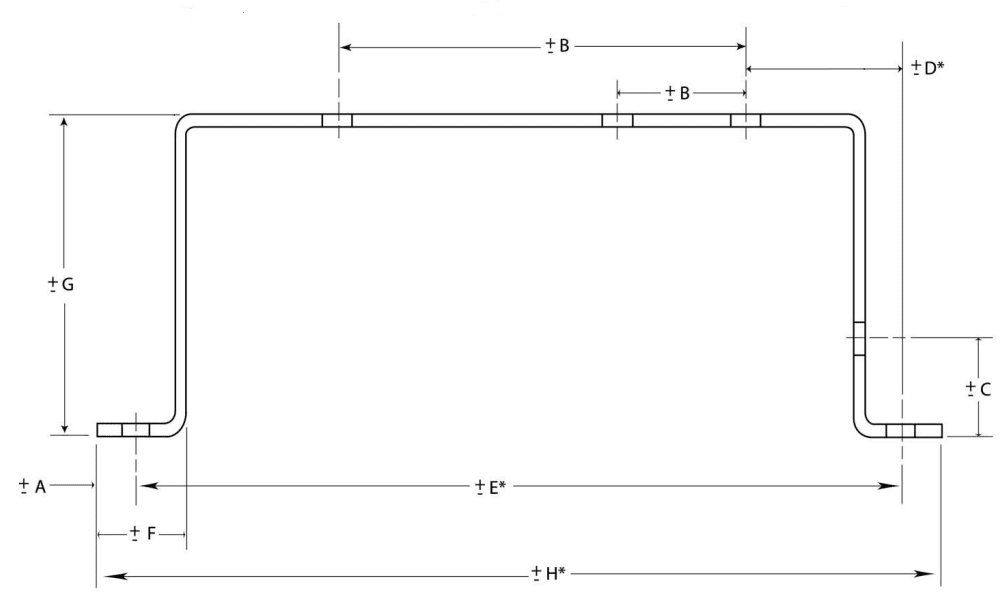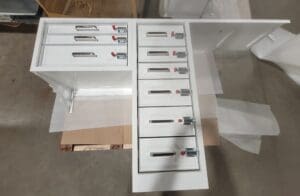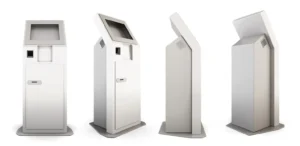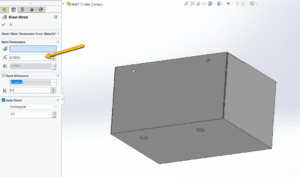Last updated on May 16th, 2024 at 10:23 am
At Approved Sheet Metal, we’ve optimized our shop to provide customers with affordable, high-quality precision sheet metal parts quickly and established ourselves as a go-to source for quick-turn prototypes.
By quickly determining the appropriate fabrication method for your part and maximizing the capabilities of our standard tooling, we ensure a fast turnaround time while maintaining exceptional quality.
Table of Contents
- 1 1. Quickly Assessing the Appropriate Sheet Metal Fabrication Method
- 2 2. Maximizing the Capabilities of Our Standard Tooling
- 3 Recommended Default Sheet Metal Tolerances
- 4 How to Optimize Quick-Turn Sheet Metal Prototypes FAQ
- 4.0.1 How does Approved Sheet Metal determine the most suitable fabrication method for sheet metal prototypes?
- 4.0.2 What advantages does a punch press offer over a laser cutter for certain sheet metal prototypes?
- 4.0.3 When is laser cutting the preferred method for sheet metal fabrication at Approved Sheet Metal?
- 4.0.4 How does Approved Sheet Metal leverage standard tooling to expedite the fabrication process?
- 4.0.5 What are the potential drawbacks of requiring custom tooling for sheet metal parts?
1. Quickly Assessing the Appropriate Sheet Metal Fabrication Method
We often use our punch press or laser cutter for sheet metal prototypes, and our ability to quickly assess the needed capability helps us expedite your order.
Sheet metal prototypes that require a punch press
- Parts with louvers. Lasers cannot cut louvers, so we always use a punch press to form parts that require these features.
- Parts with multiple countersinks. If a part needs more than one countersink, using a punch press ensures excellent speed and accuracy. Rather than laser cutting each hole individually, we can punch the countersinks into place with our stamping tools.
- Parts made from materials 0.030”-0.80” thick. This range is the “sweet spot” for our punch press; anything thicker should be laser cut.
- High-volume orders. The higher the volume, the more likely we will use a punch press. Setting up a punch press does take more time than setting up a laser cutter. However, once we get it going, the punch press is much faster at volume.
Sheet metal prototypes that require a laser cutter
- Parts with multiple free-form shapes. While a punch press can cut a wavy or squiggly pattern via a process called “nibbling,” a laser cutter is superior for achieving free-form shapes.
- Parts made from materials thicker than 0.80”. A punch press generally doesn’t perform well with materials over 0.80” thick. In these cases, a laser cutter is preferable for getting the job done.
- Stainless steel parts. While steel and aluminum sheet metal prototypes are compatible with either manufacturing method, most stainless steel materials are so hard that they can only be laser cut. (We can, however, use our punch press for parts made from 16 or 18 gauge stainless steel.)
- Low-volume orders. Whenever possible, we prefer to use laser cutting for sheet metal prototypes and short-run orders because it’s so fast. Our fiber laser is capable of cutting an impressive 866” per minute!
2. Maximizing the Capabilities of Our Standard Tooling
Another huge time saver for our customers is our ability to get the most out of our standard tooling.
We have a common turret that can be used with 36 separate tools, which includes most of the tooling we’ve found to be necessary for our customer base. We can easily pivot from using a louver tool to drilling a countersink or punching an embossment, enabling us to perform a wide range of operations FAST.
The drawbacks of custom tooling
Parts that require custom tooling stretch lead times and are often much more expensive than parts that are compatible with standard tooling.
For example, if a customer designs a louver that is wider than our standard tooling can achieve, acquiring the custom tooling could add two weeks to their lead time and increase costs by several thousand dollars.
When your part’s functionality depends on a feature that falls outside the scope of standard tooling, paying your shop to acquire or build a custom tool for your part may be the only option.
However, we find that customers sometimes unwittingly design overly complex features without really needing them. In these cases, we’ll suggest a slight adjustment to the design to ensure we can use our standard tooling.
Approved Sheet Metal’s Standard Tooling
Here’s a look at the standard tooling we have available in our shop:

How to Optimize Quick-Turn Sheet Metal Prototypes FAQ
Our team quickly assesses the fabrication method based on specific part requirements. Punch presses are ideal for louvers, multiple countersinks, materials of certain thicknesses, and high-volume orders. Laser cutting is preferred for free-form shapes, thicker materials, stainless steel, and low-volume orders due to its speed and precision.
Punch presses excel in forming louvers, handling multiple countersinks accurately, working with materials in the 0.030”-0.80” thickness range, and processing high-volume orders efficiently, maximizing speed and accuracy.
Laser cutting is preferred for prototypes with multiple free-form shapes, thicker materials (above 0.80”), stainless steel parts, and low-volume orders due to its speed, precision, and compatibility with specific materials and shapes.
With a turret featuring 36 separate tools, we utilize standard tooling for various operations, swiftly transitioning from louvers to countersinks or embossments. This versatility enables us to perform a wide range of operations quickly and efficiently.
Custom tooling can significantly extend lead times and increase costs. When part functionality depends on features beyond standard tooling, acquiring or building custom tools might be necessary, leading to delays and added expenses. However, slight design adjustments can often align with standard tooling capabilities, avoiding these drawbacks.





